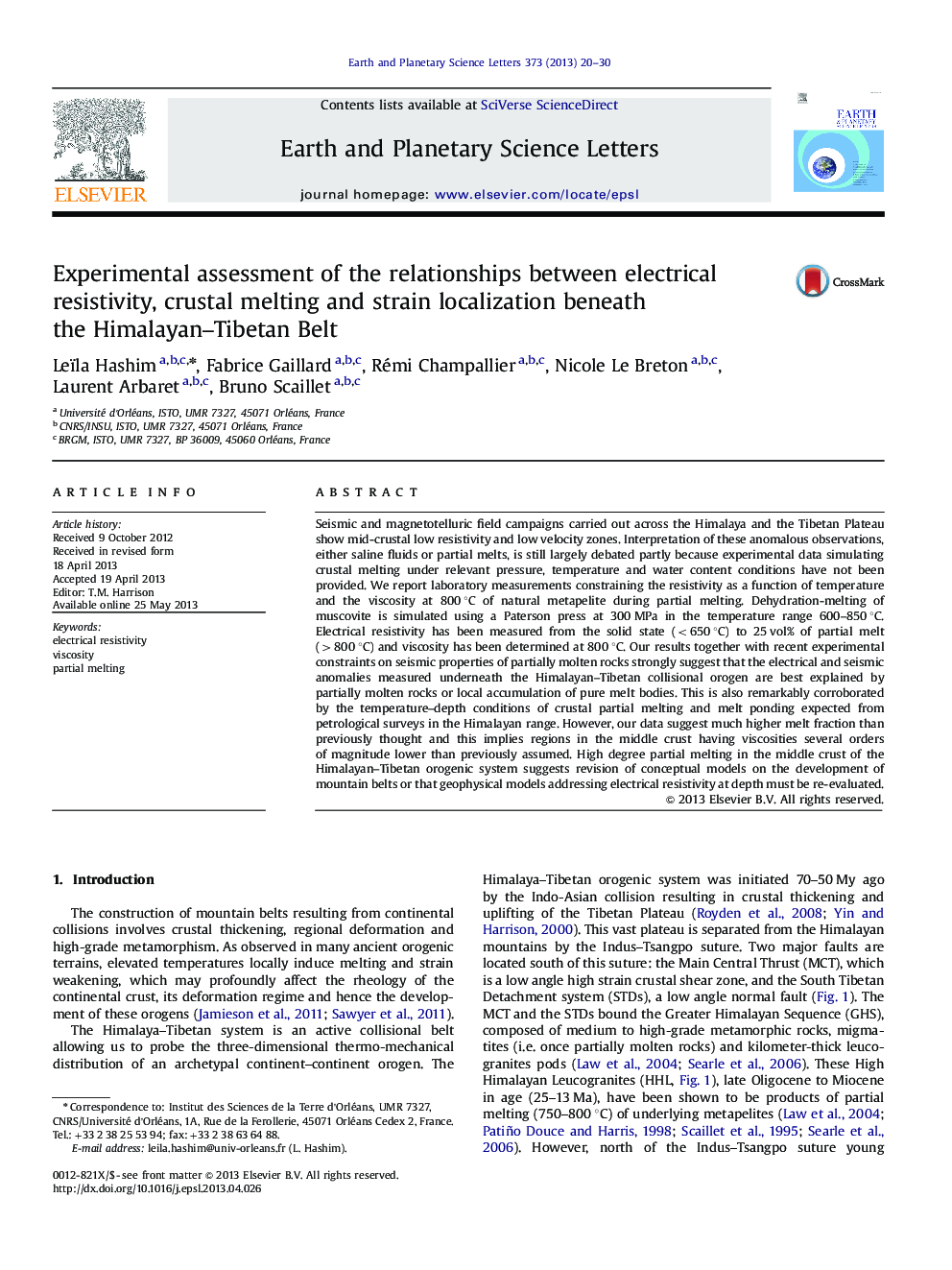| Article ID | Journal | Published Year | Pages | File Type |
|---|---|---|---|---|
| 4677061 | Earth and Planetary Science Letters | 2013 | 11 Pages |
•Crustal geophysical anomalies beneath the Himalayan–Tibetan Belt.•Electrical and viscosity measurements during partial melting experiments.•High degree partial melting and fully molten leucogranites in Himalayan crust.•Considerable viscosity decrease compared to previous numerical assessments.•Experimental data set representing benchmark for numerical models.
Seismic and magnetotelluric field campaigns carried out across the Himalaya and the Tibetan Plateau show mid-crustal low resistivity and low velocity zones. Interpretation of these anomalous observations, either saline fluids or partial melts, is still largely debated partly because experimental data simulating crustal melting under relevant pressure, temperature and water content conditions have not been provided. We report laboratory measurements constraining the resistivity as a function of temperature and the viscosity at 800 °C of natural metapelite during partial melting. Dehydration-melting of muscovite is simulated using a Paterson press at 300 MPa in the temperature range 600–850 °C. Electrical resistivity has been measured from the solid state (<650 °C) to 25 vol% of partial melt (>800 °C) and viscosity has been determined at 800 °C. Our results together with recent experimental constraints on seismic properties of partially molten rocks strongly suggest that the electrical and seismic anomalies measured underneath the Himalayan–Tibetan collisional orogen are best explained by partially molten rocks or local accumulation of pure melt bodies. This is also remarkably corroborated by the temperature–depth conditions of crustal partial melting and melt ponding expected from petrological surveys in the Himalayan range. However, our data suggest much higher melt fraction than previously thought and this implies regions in the middle crust having viscosities several orders of magnitude lower than previously assumed. High degree partial melting in the middle crust of the Himalayan–Tibetan orogenic system suggests revision of conceptual models on the development of mountain belts or that geophysical models addressing electrical resistivity at depth must be re-evaluated.
